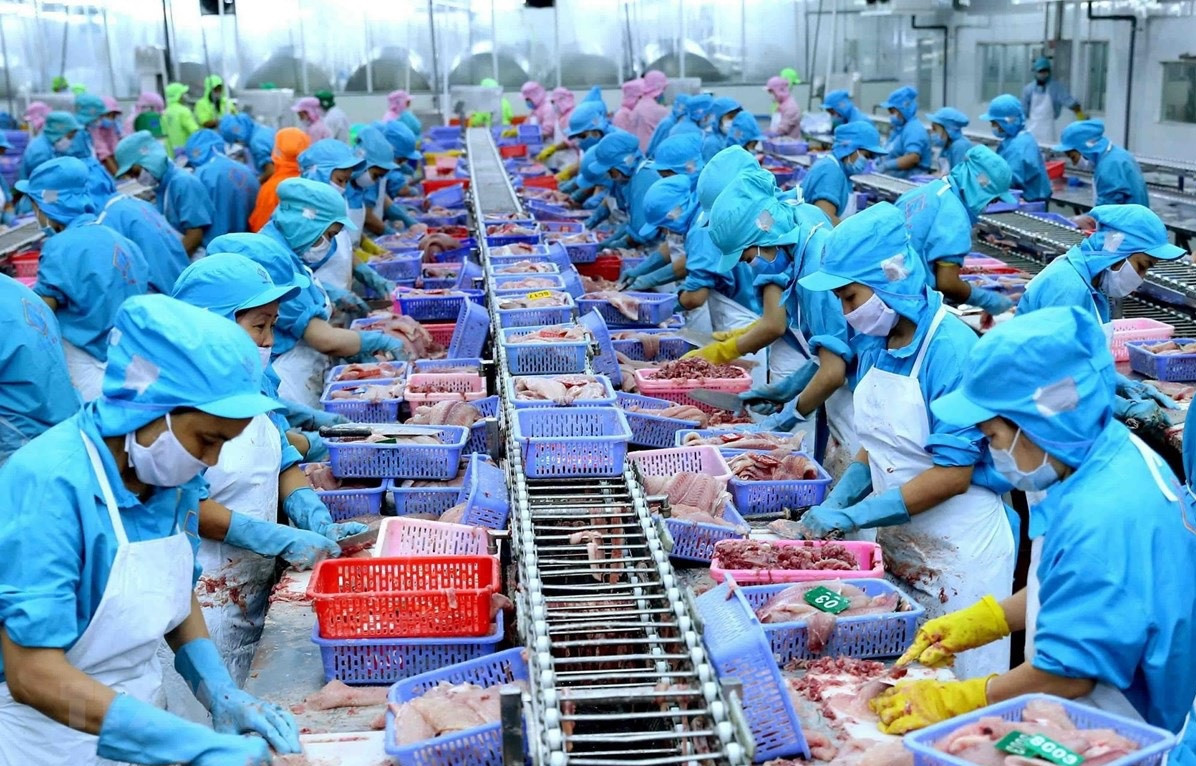With export revenues of around $2 billion annually, Vietnam’s pangasius industry has helped the country become the world’s third-largest seafood exporter.
However, the value chain remains heavily reliant on low-value, semi-processed products, highlighting the need for strategic restructuring.

Vietnam’s pangasius exports are showing clear signs of recovery in 2025, with double-digit growth expected. Despite increased farming of this catfish species in countries like India, Bangladesh, Indonesia, and Egypt, Vietnamese pangasius remains the top choice for major importers.
Vietnam produces 1.5 to 1.7 million tons of commercial pangasius annually, with average export turnover ranging from $1.6 billion to $2.3 billion. The country currently supplies over 90% of the world’s frozen pangasius fillets.
The Mekong Delta, with its extensive hydrological network, stable water supply, and favorable climate - conditions not widely available in other farming countries - is home to one of the largest pangasius farming zones globally.
Key provinces include Dong Thap, An Giang, Vinh Long, and Can Tho, with tens of thousands of hectares under intensive farming.
Hundreds of farming areas and processing plants in Vietnam have earned international certifications such as ASC, BAP, and GlobalG.A.P., making it easier for the industry to access demanding markets like the EU, US, Japan, and South Korea, as well as major international retail systems.
According to Nguyen Thi Thu Hang, a pangasius market expert at the Vietnam Association of Seafood Exporters and Producers (VASEP), Vietnam’s edge lies in its closed-loop value chain.
This integrated model spans seed production, feed, farming, processing, distribution, and traceability. It helps ensure consistent supply, food safety, and uniform fish size and color - all essential for premium markets.
Vietnamese Customs reported that as of June 15, 2025, pangasius exports reached $915 million, up 11% from the same period in 2024. Notably, deep-processed product exports reached $24 million, a 59% increase, accounting for approximately 2.6% of total pangasius export value. Although this share remains modest, it highlights significant potential for growth in high-value segments.
To meet growing demand for deep-processed products, many Vietnamese pangasius exporters are restructuring their entire value chain - from ASC/BAP-certified seed and farming areas to processing plants and cold logistics infrastructure - all aligned with the strategy of “deep processing.” Raw fish now meet stricter requirements for size and quality to produce premium products.
Vietnam’s pangasius portfolio has expanded well beyond frozen fillets. It now includes chunked fish, fish balls, fish cakes, frozen steamed fish, fish oil, pangasius collagen, and more.
By fully utilizing by-products like skin, swim bladders, and fat, producers boost the value of each ton of processed fish by 15% to 20%.
These by-products serve industries like animal feed, pharmaceuticals, and cosmetics - offering a distinct advantage over competitors still focused on semi-processed exports.
As global competition intensifies, Vietnamese pangasius is not only maintaining its foothold but also climbing higher. This success stems from a long-term vision, strong investments, and unwavering commitment to quality.
PV